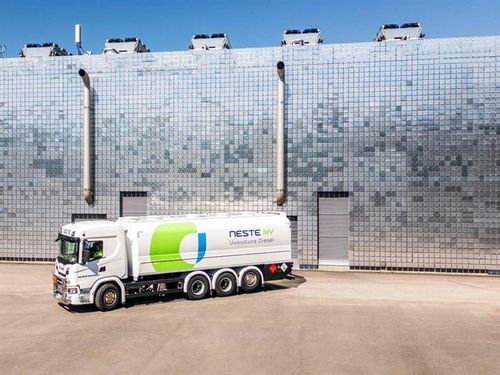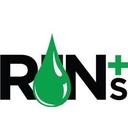Neste MY Renewable Diesel to power Verne data centers’ back-up generators in Finland

Photo: Neste MY Renewable Diesel truck in front of Verne's data center in Helsinki. / Source: Verne
October 18, 2024
BY Neste Corp.
Neste’s renewable diesel helps Verne, a provider of sustainable data center solutions for high intensity computing, to transition its operations from fossil to renewable fuels. Verne's data centers in Helsinki, Pori and Tampere in Finland will use Neste MY Renewable Diesel to power their backup generators. The switch from fossil diesel to Neste’s renewable diesel helps Verne reduce the greenhouse gas emissions from their backup generators by on average 90%* over the life cycle of the fuel when compared to fossil diesel. This contributes to Verne’s commitment to reducing the carbon footprint of its data center operations.
Neste MY Renewable Diesel is made from 100% renewable raw materials, such as animal fat from food industry waste and used cooking oil. Having a similar chemical composition to fossil diesel, Neste’s renewable diesel enables Verne to make the switch without any modifications to its generator infrastructure. Crucial for Verne’s Finnish operations, Neste’s renewable diesel is well suited for very cold weather conditions. It can be stored in temperatures as low as -32°C, and it has a reliable start-up in cold weather conditions. Furthermore, Neste's renewable diesel is ideal for backup power, as it can be stored for longer periods without impact on product quality, ensuring reliability during possible power outages.
“Verne’s mission is to provide data center services minimizing the environmental impact. The switch to renewable diesel is a milestone for the company and our customers, as it means we will be able to eliminate fossil fuels from our operations in Finland. While our backup generators are only deployed in the event of an extended power failure – which is thankfully extremely rare thanks to Finland’s highly reliable grid – they are tested regularly, so it is important we minimize the impact they have on the environment. In addition to reducing GHG emissions, Neste’s renewable diesel works very effectively in cold temperatures and is therefore an ideal solution for our Finnish operations,” says Kim Gunnelius, Head of Finland at Verne.
“Collaboration is essential when we are taking the necessary steps to fight climate change. Verne, one of the pioneers in their industry, is working towards a more sustainable future, and we are excited to be a trusted partner supporting their journey. This partnership showcases the ease of switching from fossil diesel to Neste's lower-emission renewable diesel, which can be done without compromising the performance or the reliability of the data center operations,” says Joni Pihlström, Vice President, Marketing & Services at Neste.
*) Over the life cycle of the fuel when compared to fossil diesel. The GHG emission reduction varies depending on the region-specific legislation that provides the methodology for the calculations (e.g. EU RED II 2018/2001/EU for Europe and US California LCFS for the US), and the raw material mix used to manufacture the product for each market.
Advertisement
Advertisement
Related Stories
More than 1.76 billion renewable identification numbers (RINs) were generated under the Renewable Fuel Standard in January, down from 1.91 billion generated during the same period of 2024, according to data released by the U.S. EPA on Feb. 20.
The U.S. EPA on Feb. 20 released updated small refinery exemption (SRE) data showing that 13 previously denied SRE petitions for Renewable Fuel Standard compliance years 2021 and 2022 are being reconsidered. No new SRE petitions were filed.
OMV Petrom has announced the start of construction for a sustainable aviation fuel (SAF) and renewable diesel (HVO) production unit at the Petrobrazi refinery in Romania. The new facility will have an annual capacity of 250,000 tons.
CVR pauses development of potential SAF projects pending regulatory, tax credit clarity
CVR Energy Inc. released fourth quarter financial results on Feb. 18, reporting reduced renewable diesel production. The company also said it is pausing development of SAF capacity pending clarity on government subsidies.
The U.S. EIA reduced its forecast for 2025 biodiesel production in its latest Short-Term Energy Outlook, released Feb. 11. The forecasts for renewable diesel production and the production of other biofuels, including SAF, were maintained.
Upcoming Events










